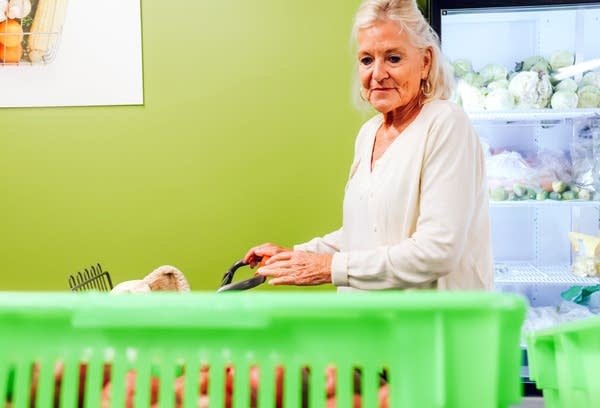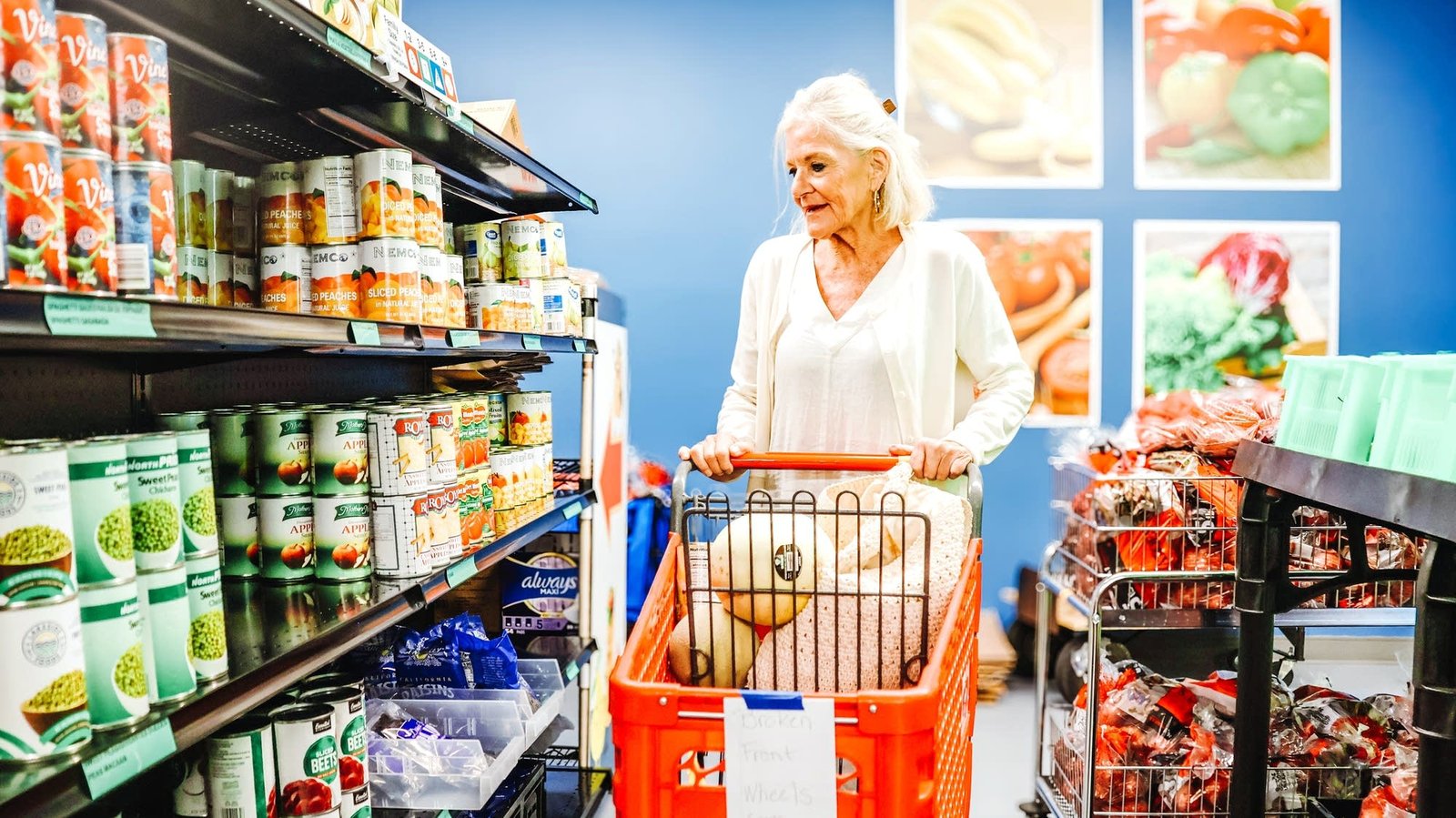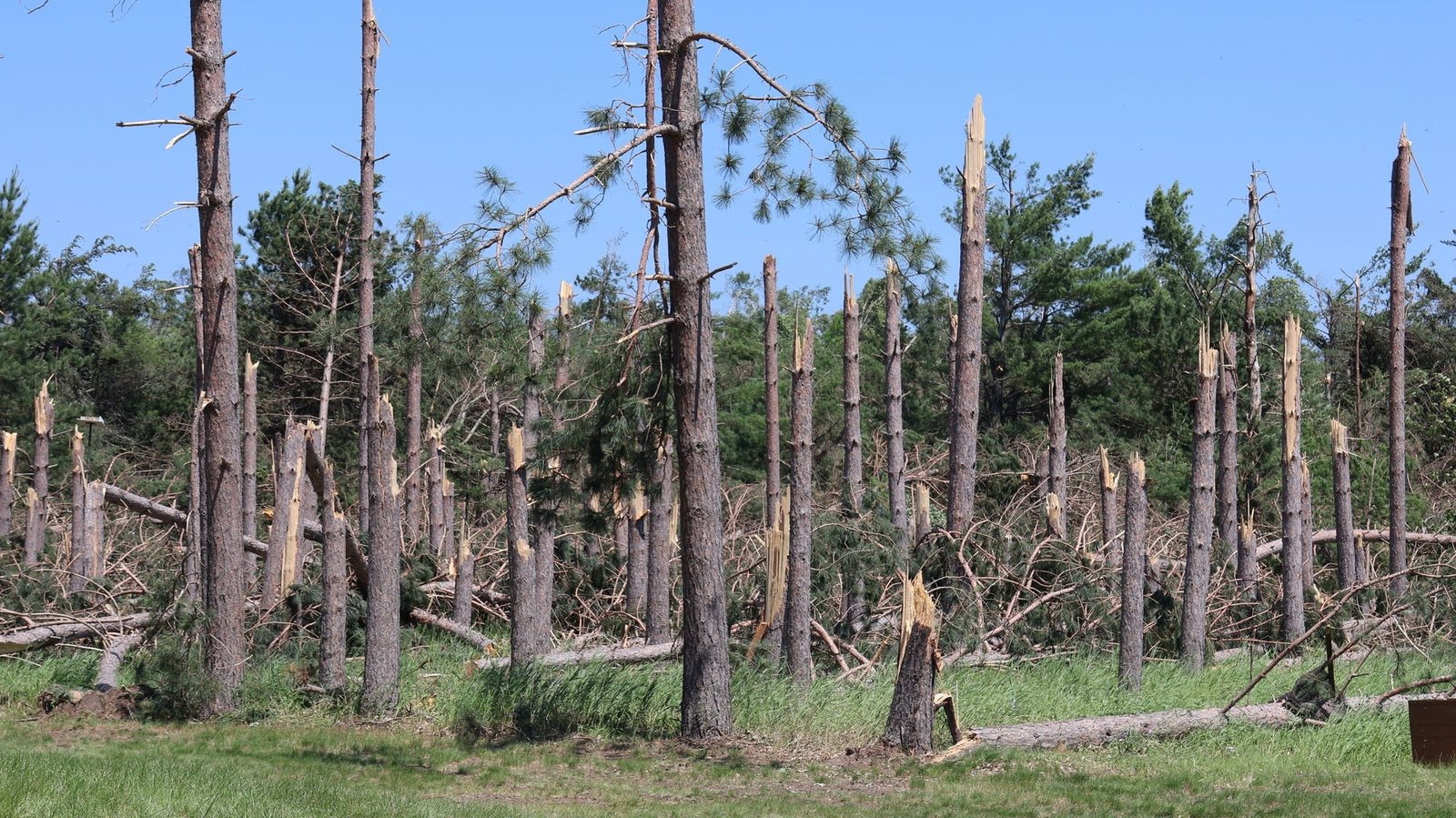Hunger relief organizations are working to de-stigmatize visits to the local food shelf: making them feel like nothing more than a trip to the grocery store.
Several Minnesota food shelves are implementing shopper-choice models, which provide visitors access to fresh, nutritious food options while emphasizing dignity.
But deep federal budget cuts make the future of these programs uncertain.
Jill Branson, 69, of St. Peter visits the St. Peter Area Food Shelf inside a renovated space in a strip mall. She pushes a cart through aisles, browsing a wide range of fruits and vegetables.
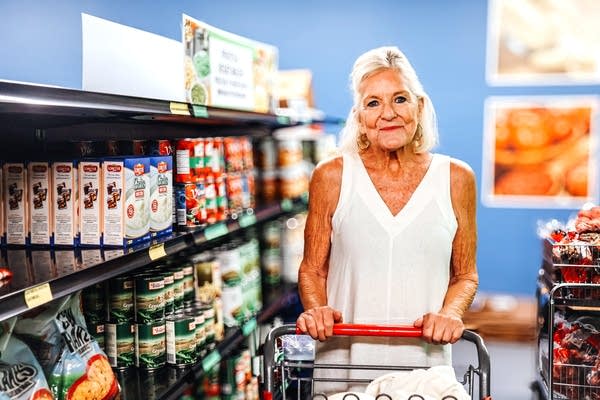
“It is beautiful,” Branson remarked. “Oh my gosh, they have lots of stuff. There’s eggplant and cucumbers. There’s cauliflower, carrots, peppers, celery…They have a huge selection here.”
This huge produce selection is housed within a vibrant space of walls painted royal blue and lime green. There’s new signage in different languages. Branson said she’s impressed, and she doesn’t feel out of place.
“It is bright and clean and fresh and organized,” she said. “You can still shop here like you would at a regular store. You’re amongst other people too, so there’s conversations going on. It's not just the shopping, [you] experience the community too.”
St. Peter's food shelf renovated their space this summer to become a certified "SuperShelf," which provides food assistance with more of a supermarket-like experience.

SuperShelf started as a 2012 partnership between Lakeview Health Partners and Valley Outreach under a different name—Better Shelf for Better Health—and changed Valley Outreach’s food shelf. The methods that started there were shared with other area food shelves.
Eventually, SuperShelf received funding for a pilot evaluation study. In 2017, SuperShelf received National Institutes of Health funding to expand and formally evaluate the impact of the SuperShelf on the client's diet and health.
The University of Minnesota Extension provided funding in 2019 to support additional transformations and HealthPartners also provided support for more SuperShelf transformations in rural parts of the state. Susie West, a University of Minnesota Extension educator, says this research-based program gives clients fresher, more nutritious food options—and the grocery store-like layout helps reduce food waste and improves efficiency.
“There’s not really a need to make it so undignified,” West said. “The idea of going to a really kind of drab, grubby basement or something and getting a box of food that you don’t get any choice over because you really need food today to feed your family. If we can make that experience better for people, you know, people deserve that.”
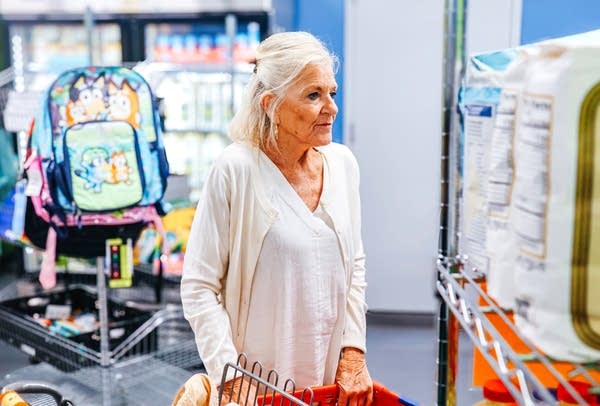
Since the start of SuperShelves, there are more than 90 certified sites in Minnesota—and they’re funded through the federal Supplemental Nutrition Program, or SNAP.
But, the federal reconciliation bill defunds these kinds of programs as of October 1. Many SuperShelf staffers throughout Minnesota will be laid off.
Nonetheless, West says she and other hunger relief advocates are working to find ways to keep SuperShelf going. Even if it might look different in the future.
“This project has such a long legacy,” she said. “I don’t think anybody’s ready to let go of it that easily.”
Meanwhile at the statewide level, SecondHarvest Heartland also feels the crunch from federal budget cuts. Robin Manthie, director of neighbor services, says the food bank already experienced “multiple million dollars of impact” through food or financial donations from government cuts.
Manthie says from what she hears from food shelves across Minnesota, the effects from SNAP cuts are worrisome—and the rising cost of groceries are affecting everyone and driving more visits.
“We are feeling the pressure at SecondHarvest in accessing the food to distribute to our food shelves, and that comes in multiple forms,” Manthie said. “The government has cut off how much food is available through commodity programs or TEFAP. …We all know the cost at a grocery store. …It’s really getting hit on all fronts in terms of the amount of food we can bring into our system. We are struggling in the same way someone else is when they show up at that grocery store.”
‘The food shelf is a joyful place’
Customer Jill Branson feels the uncertainty. Back at the St. Peter SuperShelf, she’s already noticed how her monthly SNAP food benefits haven't kept up with the rising cost of groceries.
“I limit myself more now than ever before, and I don’t buy like a nice piece of fish, or some other form of protein all that often anymore like I used to,” Branson said. “ I felt OK before, and now it’s like no. That will cut into another part of my grocery list.”
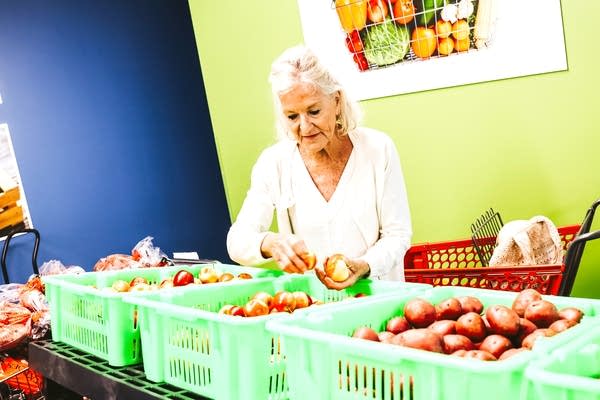
Cindy Favre, who manages the St. Peter Food Shelf, says SuperShelf helps guests like Branson more than just putting food on the table, and she fears losing such an essential community hub.
Favre says St. Peter’s food shelf serves about 300 families but next month, the food shelf will limit monthly visits to once per household in order to sustain their operations.
The last thing they want, Favre says, is for people to go hungry.
“That’s one of the things I think might surprise people, is that the food shelf is a joyful place,” Favre said. “ There’s a lot of laughing. There’s talking. People greeting one another. We don’t want it to be a place that’s anxiety producing or provoking.”
